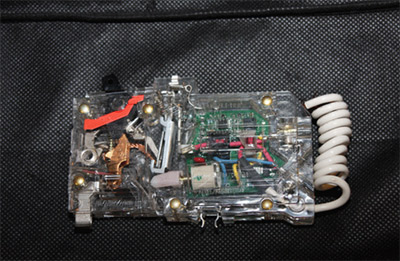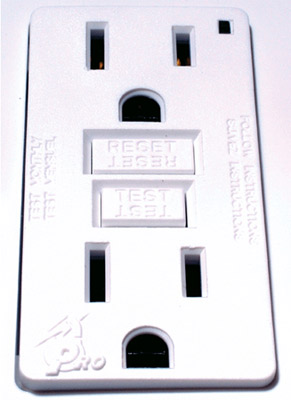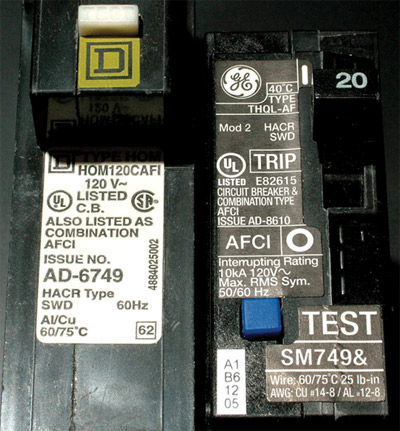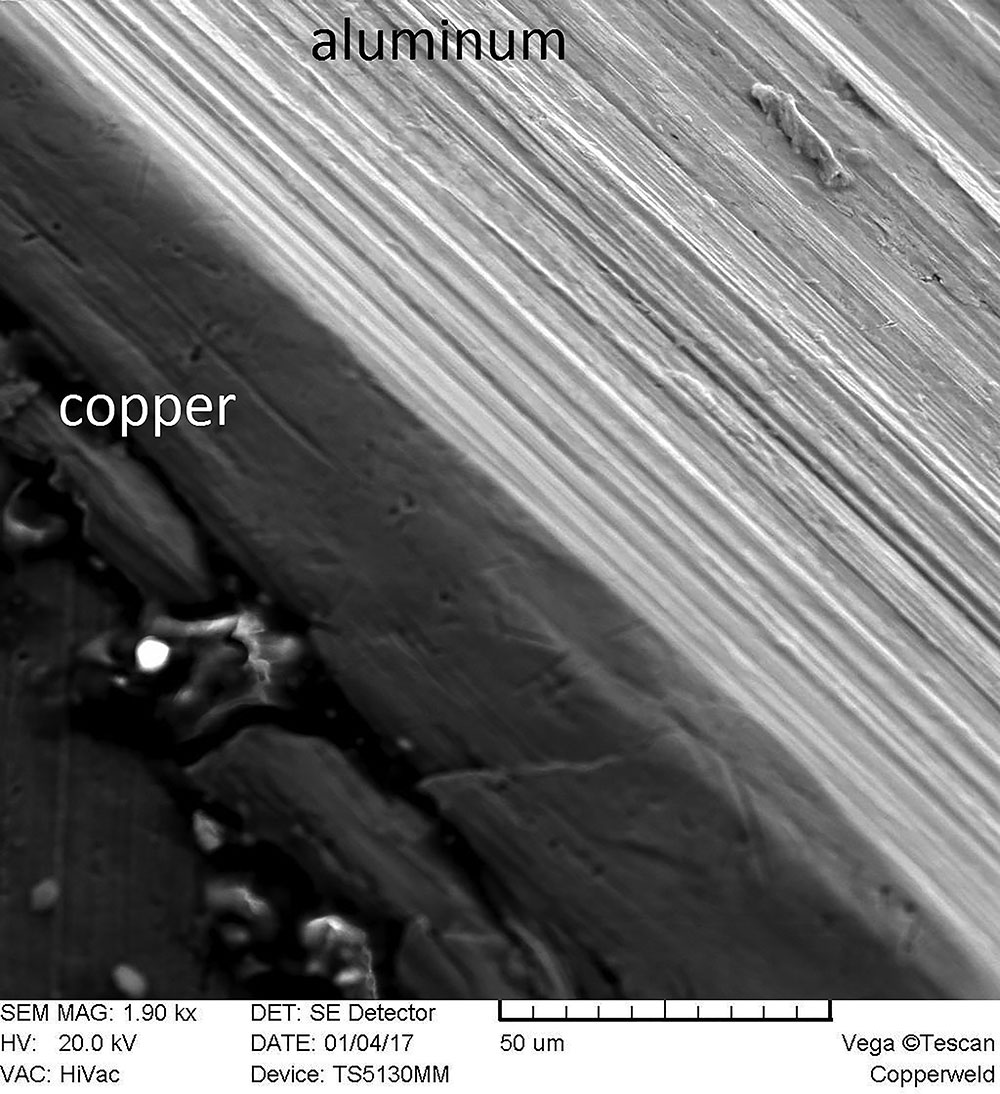 In this article we will continue where we left off discussing branch circuit requirements, picking up with 210.8, Ground Fault Circuit-Interrupter Protection for Personnel. First, we must take notice that this is for personnel protection only. There are other types of ground-fault protection which will be covered later in the NEC. Ground-fault circuit-interrupter (GFCI) protection was first introduced in the 1968 version of the NEC for swimming pool lights. Since then, the Code has continued to embrace and expand the requirements for GFCI protection (see photo 1 for a typical GFCI outlet device).
In this article we will continue where we left off discussing branch circuit requirements, picking up with 210.8, Ground Fault Circuit-Interrupter Protection for Personnel. First, we must take notice that this is for personnel protection only. There are other types of ground-fault protection which will be covered later in the NEC. Ground-fault circuit-interrupter (GFCI) protection was first introduced in the 1968 version of the NEC for swimming pool lights. Since then, the Code has continued to embrace and expand the requirements for GFCI protection (see photo 1 for a typical GFCI outlet device).
In order to completely understand GFCI protection, we have to take a closer look at how these devices operate. GFCI devices have an electronic sensing ability which monitors the circuit and will shut it down in the event power is delivered to an unintended location. When I get to this point in a classroom situation, we take apart a GFCI device in order to get a good look at the inner mechanism. Once we open the case, the first item we notice is the coil loop, which is a current transformer (CT). We pass the load-side conductors of the GFCI device through the center of the CT, and from there these conductors then feed the receptacle portion of the device (if it is a receptacle) and then the rest of the load downstream. These conductors that are monitored by the CT are the ungrounded (hot) and the grounded (neutral) (see photo 2). As long as the current going out on the hot conductor is equal to the current coming back on the neutral, the CT will have a zero current reading as the amperage going out will cancel the amperage returning. In this condition, we know the system is working just fine.

Photo 1. Example of typical GFCI outlet device
However, when we have current going out and the amount returned on the neutral differs by an amount in excess of 5 milliamps (mA), the CT senses this and recognizes that power is being consumed somewhere outside the circuit being monitored. At this point, the device actuates the relay which opens the circuit. When power is being utilized outside the circuit, it means the power is going directly to ground somewhere. Possibilities include current passing through your body, or equipment which has been exposed to a wet location (like a hair dryer dropped in water), or a power tool in your garage may have a shorted cord causing an imbalance in a GFCI device. All of these possibilities create hazardous conditions, which is why we require GFCI protection.
In the history of GFCI usage, we have had times and situations where it hasn’t always been a favorite item for electricians and property owners due to a few simple issues. First, we had to teach installers how to properly install GFCIs to avoid false tripping. Second, from time to time the manufacturers have had production issues which caused some installation issues. But in the long run, these devices have saved many lives and are an important part of our electrical system, especially in dwelling units.
Now let’s look at theCodeand see where we have to apply these devices. In 210.8 (A) through (C) theCodeis prescriptive as to where we must have the protection the GFCI devices offer. In Dwellings [210.8 (A)] we cover bathrooms, garages (which includes accessory buildings with certain conditions), outdoors, crawl spaces (at or below grade), unfinished basements, kitchens (receptacles serving countertops surfaces), sinks (outlets within 6 feet) and lastly, boathouses.
Section 210.8(B) covers the locations required in other than dwelling units, which look very similar in many ways and includes bathrooms, kitchens, rooftops, outdoors, within 6 feet of any sink, indoor wet locations, locker rooms with showers and garages (which includes service bays and similar areas where electrical equipment might be used). The last location in (C) we are required to protect is any boat hoist (not exceeding 240 volts) installed in dwelling units.

Photo 2. Internal components of GFCI devices
This basically covers the GFCI requirements in theCode, but once again I remind you to open your code book and read this section. There are some special conditions which have led to the inclusion of exceptions to these requirements; however, I won’t go into those details here.
Next we will skip to 210.11, Branch Circuits Required; this section works in conjunction with Section 220.10, where we are provided with the methods to calculate the loads for various types of facilities. Once we have these values, we can start calculations for the branch circuits that feed the utilization loads. Certain portions of theCodewill require a separate branch circuit for specific types of equipment. In 210.11(A) we look at the number of branch circuits, which again is determined by the calculations from 220 and based on the size or rating of the circuits used. At no time shall we exceed the maximum specified in 220.18, and paragraph (B) outlines the need to evenly proportion these loads.
In paragraph (C) we get to the heart of 210.11, which is where we find the required circuits for dwelling units. When I used to teach the combination inspectors in my jurisdiction, this is one of the areas we would spend a little time on, as most of them were doing inspections on single-family dwellings. These circuits are really important and if not inspected properly will lead to problems for homeowners. With 210.11(C)(1), Small-Appliance Branch Circuits, we have the requirement for a minimum of two 20-amp small appliance branch circuits to be provided for the receptacles specified in 210.52(B) Small Appliances.
I always stop at this point in class and describe how to verify and inspect this in the field. When possible, we would go on a field trip to demonstrate how to trace these circuits. We discuss how to follow the wiring method, generally non-metallic sheathed cable, through the framing members to make sure these serve only the areas specified by 210.52(B). In a kitchen, our wiring methods at times become extremely congested by the time you feed all the equipment present. Because of the large number of circuits, it can be a challenge to trace the wiring and verify code-compliance.

Photo 3. Example of the manufacturer’s efforts to package products for the combination AFCI requirements
Laundry circuits are also covered in 210.11(C)(2), where it states that at least one 20-amp circuit will feed the laundry area. The requirements for bathrooms are covered in 210.11(C)(3), where it states that at least one 20-amp branch circuit is required to serve the bathroom outlets. With the bathroom circuits we have an exception that allows wiring the bathroom receptacles in two distinct ways. The first way is to use one branch circuit and feed from one bathroom receptacle to the next bathroom receptacle and to continue to connect them to all the bathroom receptacles throughout the house. The other method covered by the exception is to use a single (dedicated) 20-amp circuit to each bathroom and to feed all the outlets for other equipment within the same bathroom from this circuit; this would include lights, fans, and receptacles.
As a matter of personal opinion, while not an NEC requirement, when choosing between these two options, I’ve always encouraged the latter method. I recommend using a dedicated circuit to each bathroom because I’ve fielded many calls from homeowners who have had breakers trip when they use hair dryers in two different bathrooms, each pulling 15 amps, which will trip the 20-amp breaker after extended use. By using the single circuit to each bathroom you typically avoid this situation, which can lead to a happier homeowner. Training inspectors on how to trace out these circuits to verify which wiring method has been used is best done in a field visit for training.
As we move into 210.12, Arc-Fault Circuit-Interrupter Protection, we will discuss one of the most controversial topics of the recent code changes. First, let’s review what an AFCI is and how it works. An AFCI is a device which is often confused with GFCI devices. AFCI devices are a fairly new to theCodehaving first been included in the 1999 code, with an effective date of January 1, 2002; and as with the GFCI device, we just keep expanding the use of these devices as we develop a better understanding of the advantages and how to properly apply them.

Photo 4. Close-up of labels clearly identifying these AFCI devices as combination type
AFCI devices work on a different principle than the GFCI. An AFCI device monitors a circuit’s current and looks for the anomalies or spikes in amperage that result from very short duration, high-current occurrences, which are the signature of a fault condition. This may be happening at an extension cord, appliance cord, a poor connection at a receptacle or switch device, or other areas in which we have a fault event. When these AFCI devices were first introduced, they were limited and could only sense a parallel type of fault (line to neutral, basically).
With further development, they now make a Combination AFCI device which will monitor and sense both parallel and series faulting events (see photos 3 and 4). A series fault is a weakened condition of a conductor which creates a high resistive spot at which that conductor will start to arc across the damaged conductor (see photo 5). In the 2005 Code, we were charged with a future effective date of January 1, 2008 for the requirement of Combination AFCI devices. This time has obviously come and gone, so we should only be seeing combination devices being installed now. One thing to note is that a combination device is still only an AFCI; it does not serve the function of a GFCI. The locations required for AFCI protection have progressed from just sleeping areas in the 2002 Code to where we are now required to utilize this type of protection in dwelling unit family rooms, dining rooms, living rooms, parlors, libraries, dens, bedrooms, sunrooms, recreation rooms, closets, hallways, or similar rooms or areas in the 2011 edition. As you have probably noticed from this list, we have just about covered every location within a dwelling except a few, which just happens to usually be covered by GFCI protection (mainly kitchens, bathrooms, and garages). This is not because of any conflict between GFCIs and AFCIs; both can be used on the same circuit.
We have some special conditions of which we should be aware; first, if we have an individual branch circuit feeding a fire alarm system, we are allowed to omit the AFCI protection according to certain conditions in 210.12(A) Exception No 3. The other two exceptions deal with methods to provide AFCI protection. The most common method of providing AFCI protection is to install an AFCI circuit breaker device, due to the language of 210.12(A) which requires us to provide protection of the branch circuit. So where does the branch circuit start? It starts at the final overcurrent device which is located in the panel; this is why the AFCI breaker has been the most common method.

Photo 5. This is an example of the type of issues an AFCI is designed to detect. This cord assembly was part of a heating pad which was always used at night while covered or within bedding materials. It was brought to me by a former employee after it had shorted out while his wife was using it, the fault wasn’t enough to trip the breaker. This is the type of issues an AFCI is designed to detect.
However, we are not limited to just the use of circuit breakers, since the Code does allow the use of an outlet branch-circuit type AFCI device. We find in 210.12(A) Exceptions 1 and 2 the wiring methods required to utilize an AFCI outlet device instead of the traditional circuit breaker type of AFCI device. These seem quite restrictive; however, the code panel has been very firm in their belief that the entire branch circuit must be protected.
If I have an older house which was built before the requirement of AFCI protection was enforced or available, how can I benefit from this new safer technology? If I had all my home-runs in two-wire nonmetallic-sheathed cable, I could simply install the breaker type of AFCI device like new homes; however, this is not the typical wiring method used when wiring dwellings. Contractors typically utilize three-wire nonmetallic-sheathed cable for the home-runs, thus creating a multi-wire circuit as covered in the previous article. This works fine and is perfectly code-compliant; however, not all manufacturers make a two-pole AFCI breaker, and it is a fairly recent product development. So based on the previous code language you might have to rewire your house to have this level of safety provided in new houses, unless you happen to have a panel made by the manufacturer of one of the two-pole AFCI breakers.
While teaching various classes throughout the last six years, I have asked how many people in the room have a house with AFCI devices, and usually it is less than ten percent of the attendees. I’m a firm believer in this technology and also feel that it should be able to be utilized in existing dwellings.
In the 2011NEC, we finally have provisions for using AFCI outlet type of devices in existing branch circuits. Section 210.12(B)(2) provides language stating that an AFCI located in the first receptacle outlet and by connecting the downstream receptacles to the load-side of the device, we can protect the rest of the circuit. This is to be used for any branch circuit extensions, modifications or replacements in dwelling units, if these areas are required to be AFCI-protected in the current code.
This was a much needed change, for multiple reasons. First, it allows us to benefit from the safety provided by these devices in older properties. Second, if someone does a minor addition to their home, for example in a bedroom where they are just adding two or three additional receptacles, they can now just add an outlet AFCI device and not have to rewire the home-run. As a former AHJ, I was often faced with this code enforcement issue when a remodel or addition was done to a bedroom, and they would be required to AFCI the new outlets. Most times this could not be done without a new home-run which was cost and labor prohibitive, usually resulting in some type of compromise. I understand and express to those that I teach that if at all possible, we should protect as much of a circuit as possible. However, if we can protect all but the home-run, this provides more protection than no AFCI protection at all.
The last item in 210 Part 1 addresses branch circuit requirements for Guest Rooms and Guest Suites. This requirement was created to provide branch circuit requirements for these types of facilities which provide more than just a bed and bathroom. More and more often the hospitality franchises are creating mini-houses for us to stay in while traveling that have multiple rooms, a working desk area, and now kitchens. So how do we wire these? Well, if they have permanent provision for cooking, which usually includes a cooktop, refrigerator, and sink, then all the requirements for dwelling unit branch circuits apply. One question that comes up frequently at this point is: what if there is a countertop microwave, does this qualify as permanent provisions for cooking? The answer is no, they have to have more than just a microwave.
It may seem as though we aren’t progressing very fast in this series of articles; however, in order for us to understand and retain what we have covered, I try to provide enough detail in such a way that we create a reason to remember the code and some of the reason why we have it. When I would teach this to non-electrical type inspectors, we would often spend quite a bit of time in certain areas of the code to answer and clarify items until everyone felt they understood the concepts. In the next issue, we should be able to complete the remainder of the requirements in Article 210.














Find Us on Socials